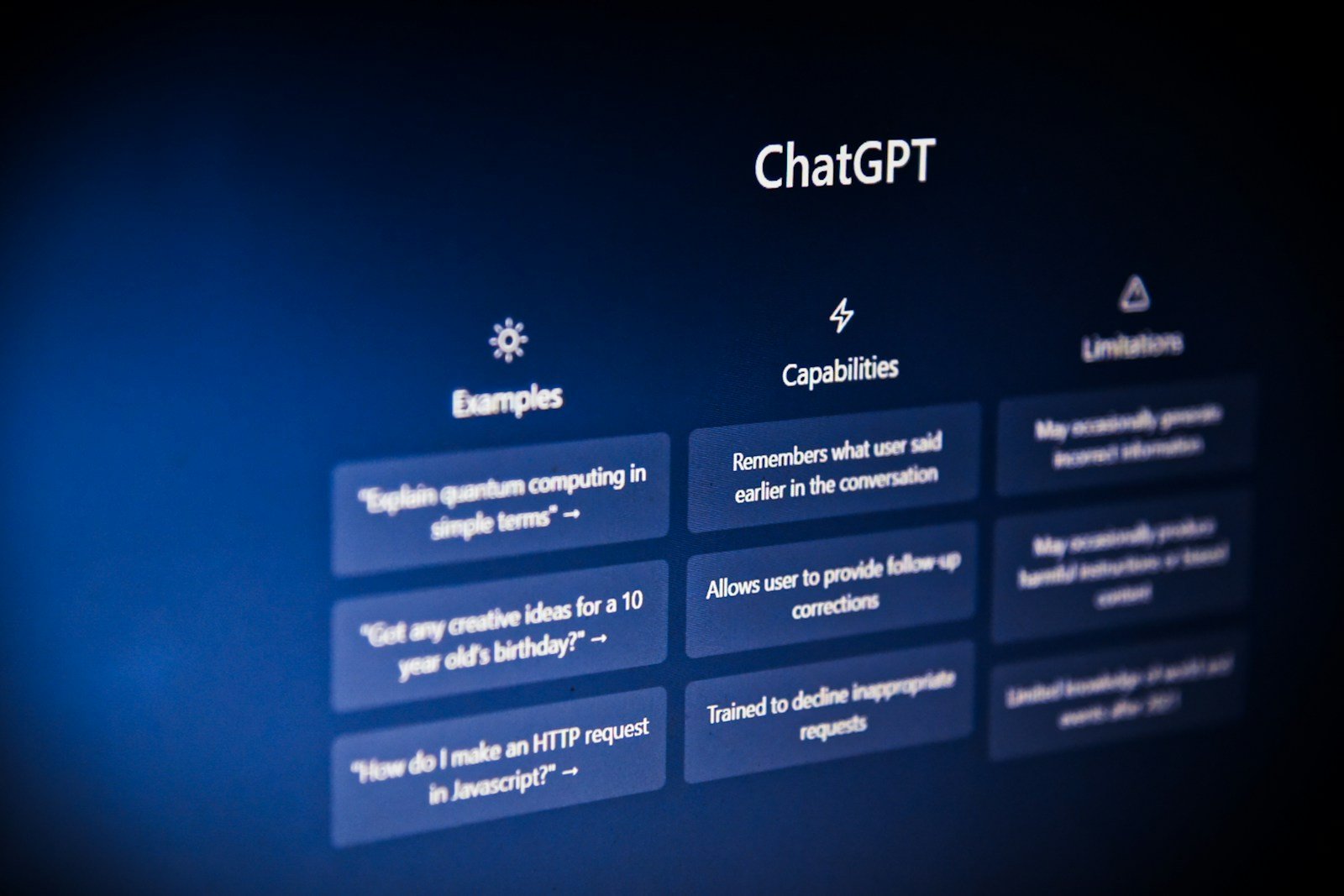In today’s AI-driven world, the quality of the output often depends on the input you provide. Whether you’re using ChatGPT to generate content, MidJourney to create visuals, or AI coding assistants to streamline development, the difference between mediocre and exceptional results often comes down to one skill: prompt writing.
Prompt writing, sometimes called prompt engineering, is the art and science of crafting clear, precise, and context-rich instructions that guide AI tools to deliver exactly what you need. A well-written prompt can save hours of editing, reduce errors, and unlock creative solutions you might not have imagined.
At Deepak.digital, we’ve seen firsthand how mastering prompt writing can transform the way businesses, creators, and marketers leverage AI. In this guide, we’ll explore the essential techniques, best practices, and advanced strategies you need to craft prompts that consistently produce high-quality, actionable AI outputs.
By the end of this post, you’ll not only understand what makes a great prompt but also gain practical skills to write prompts that deliver precise, creative, and reliable results—every single time.
Understanding Prompt Writing

1.1 What is a Prompt?
A prompt is any instruction or input given to an AI tool that guides its response. Think of it as a question, command, or scenario you present to the AI to generate text, images, code, or other outputs.
Prompts can vary widely in complexity:
-
Simple Prompt: “Write a short poem about the ocean.”
-
Complex Prompt: “Write a 300-word motivational blog post in a conversational tone, targeted at entrepreneurs, highlighting the importance of resilience in business, and include a practical example.”
The clarity and structure of your prompt directly influence the AI’s output. A vague prompt often produces generic results, while a well-crafted prompt can generate precise, high-quality content tailored to your needs.
1.2 Why Prompt Writing Matters
Effective prompt writing is critical because AI is only as good as the instructions it receives. A well-crafted prompt:
-
Enhances Accuracy: Clear instructions reduce irrelevant or off-topic responses.
-
Boosts Creativity: Context-rich prompts allow AI to generate more engaging and original outputs.
-
Saves Time: Less editing is needed when the AI understands your intent.
-
Reduces AI Hallucinations: Specific prompts help prevent AI from generating incorrect or misleading information.
For example, asking ChatGPT to “Write about AI” may produce a generic answer. But prompting it with “Write a 500-word beginner-friendly guide explaining how AI can improve small business marketing strategies, including three real-world examples” results in actionable, relevant content.
1.3 The Role of Prompt Engineering
Prompt engineering is the process of designing, testing, and refining prompts to optimize AI outputs. It’s becoming a crucial skill across industries, including content creation, digital marketing, software development, and design.
Benefits of prompt engineering include:
-
Consistency: Ensures outputs match your desired style, tone, and format.
-
Efficiency: Reduces trial-and-error by giving the AI clearer instructions.
-
Scalability: Allows teams to create repeatable processes for AI-assisted work.
In essence, prompt engineering transforms AI from a generic tool into a precise, reliable assistant capable of handling complex tasks.
Key Principles of Effective Prompt Writing

Crafting an effective prompt is both an art and a science. By following a few fundamental principles, you can significantly improve the quality, accuracy, and relevance of AI-generated outputs.
2.1 Clarity
The most important rule in prompt writing is clarity. Your prompt should communicate exactly what you want the AI to do.
Tips for clarity:
-
Use simple, direct language.
-
Avoid ambiguity or vague instructions.
-
Break complex requests into smaller, specific tasks.
Example:
-
Vague Prompt: “Write about marketing.”
-
Clear Prompt: “Write a 400-word blog explaining three digital marketing strategies small businesses can use in 2025, using a conversational tone.”
Clear prompts reduce misunderstandings and produce outputs closer to your expectations.
2.2 Context
AI performs better when it has context. Providing background information helps it tailor the output to your specific needs.
How to add context:
-
Specify your audience (beginners, experts, professionals).
-
Mention tone and style (formal, conversational, persuasive).
-
Include relevant examples or references if needed.
Example:
-
Without Context: “Write about social media.”
-
With Context: “Write a 300-word blog for small business owners explaining how social media trends in 2025 can increase brand awareness, using real-world examples.”
2.3 Constraints
Constraints help guide AI to meet your specific requirements. They provide boundaries for the response.
Types of constraints:
-
Word count: “Write a 500-word article.”
-
Format: “Create a list of 10 tips with bullet points.”
-
Perspective: “Explain as a marketing consultant would.”
Constraints prevent overly generic or lengthy responses and make AI outputs more actionable.
2.4 Iterative Refinement
Prompt writing is rarely perfect on the first attempt. Iterative refinement involves testing, analyzing, and adjusting prompts until the output meets your expectations.
Tips for refinement:
-
Evaluate AI outputs critically.
-
Identify missing details or irrelevant content.
-
Adjust wording, add context, or set clearer constraints.
Over time, this iterative process helps you learn which prompts work best for specific tasks.
2.5 Using Role-Playing
AI responds exceptionally well when you assign it a role. This technique provides a mental framework that guides its responses.
Examples:
-
“Act as a professional SEO consultant and write a guide on optimizing blog posts for 2025.”
-
“Pretend you are a historian and explain the impact of the printing press in simple terms.”
Role-playing improves focus, tone, and authority in AI-generated content.
Advanced Prompt Writing Techniques

Once you’ve mastered the fundamentals of prompt writing—clarity, context, and constraints—you’re ready to move to advanced techniques. These methods help you unlock the full potential of AI, enabling you to generate highly specific, accurate, and even creative outputs for complex tasks.
3.1 Step-by-Step Prompts
AI models often perform better when given instructions in a step-by-step sequence. Instead of overwhelming the AI with a large task, you break it into smaller, logical steps.
Why it works:
-
Reduces confusion for the AI.
-
Produces more structured and accurate results.
-
Simplifies editing and refinement.
Example:
Instead of saying:
“Write a complete SEO blog about prompt engineering.”
Try this step-by-step approach:
-
“First, outline the main sections for a blog on prompt engineering.”
-
“Next, expand the introduction into a 200-word opening paragraph.”
-
“Finally, draft the full blog with SEO optimization for the keyword ‘prompt writing techniques.’”
This method makes complex tasks more manageable and keeps outputs focused.
3.2 Few-Shot and One-Shot Learning Prompts
AI can learn from examples provided in the prompt itself. This technique is especially useful for maintaining a specific style or format.
-
One-Shot Prompt: You give one example, and the AI imitates it.
-
Few-Shot Prompt: You give multiple examples, so the AI has more context for patterns and tone.
Example – Few-Shot Blog Title Generation:
Prompt:
“Here are three examples of SEO-friendly blog titles:
The Ultimate Guide to Digital Marketing in 2025
7 Proven Strategies to Grow Your Online Business
How to Master Content Marketing Without a Big Budget
Now, generate 5 more blog titles about AI tools for business owners.”
By seeing these patterns, the AI understands the desired style and structure, producing higher-quality outputs.
3.3 Chain-of-Thought (CoT) Prompts
Chain-of-thought prompting encourages the AI to think step-by-step before providing an answer. This is especially effective for problem-solving, analytics, or decision-making.
Example – Problem Solving:
Prompt:
“Explain step-by-step how a small business can create a digital marketing strategy with a budget of $1,000 per month. List the steps clearly before summarizing the final plan.”
Why this works:
-
Helps the AI reason through complex problems.
-
Produces a logical, structured response.
-
Reduces errors and improves clarity.
3.4 Prompt Templates for Consistency
Prompt templates are pre-built structures that can be reused for similar tasks. They save time and ensure consistency across projects.
Here are three templates you can adapt:
a) Blog Writing Template:
“Act as an experienced content writer. Write a [word count] blog post about [topic] targeted at [audience]. Use a [tone] style and include:
Introduction
3 Main Sections with subheadings
Conclusion with a call-to-action”
b) Product Description Template:
“Create a compelling product description for [product name] in [number] words. Highlight:
Key features
Benefits
Target audience
Unique selling point”
c) Marketing Email Template:
“Write a persuasive marketing email targeted at [audience] promoting [product/service].
Subject line: [insert]
Opening hook: [insert]
Main pitch: [insert]
Call-to-action: [insert]”
These templates provide a solid framework and reduce repetitive prompt writing.
3.5 Incorporating Feedback Loops
One of the most powerful advanced techniques is using a feedback loop. This involves generating an initial response, evaluating it, and then giving the AI specific feedback to refine its output.
How to create a feedback loop:
-
Generate a first draft using a clear prompt.
-
Analyze what works and what needs improvement.
-
Prompt the AI with feedback, such as:
“Rewrite this section to sound more professional and add two real-world examples.”
This iterative process produces polished, high-quality results.
Pro Tip: Combine Techniques for Maximum Impact
These techniques can be layered together for even better results.
For instance:
-
Start with few-shot examples to teach the AI your style.
-
Use step-by-step prompts for structure.
-
Apply a feedback loop to refine the final draft.
Example Combined Prompt:
“Act as a professional digital marketing consultant.
Step 1: Outline a 5-step strategy for launching a new e-commerce brand.
Step 2: For each step, provide a real-world example.
Finally, rewrite the entire strategy in a conversational tone, suitable for beginner entrepreneurs.”
Summary of Advanced Techniques:
-
Step-by-step prompts for structure and clarity.
-
Few-shot/one-shot learning to maintain style and format.
-
Chain-of-thought prompts to encourage logical reasoning.
-
Prompt templates for efficiency and consistency.
-
Feedback loops for iterative improvement.
Mastering these techniques allows you to generate precise, professional, and context-rich outputs, no matter how complex the task.
Common Mistakes in Prompt Writing

Even experienced prompt writers sometimes make errors that lead to poor-quality AI outputs. These mistakes often waste time, create confusion, and result in outputs that are either too vague, too generic, or completely off-target.
By understanding these common pitfalls, you can avoid them and consistently write prompts that deliver precise, reliable, and actionable results.
4.1 Being Too Vague
One of the most frequent mistakes is writing overly broad or unclear prompts.
When instructions lack detail, the AI has to guess your intent, which often leads to irrelevant or generic responses.
Example:
-
❌ Vague Prompt: “Write about marketing.”
-
✅ Clear Prompt: “Write a 600-word blog post for beginner entrepreneurs explaining three digital marketing strategies they can use in 2025, using a conversational and motivational tone.”
How to fix it:
-
Always include who, what, when, where, and how in your prompt.
-
Be explicit about your desired outcome, tone, and audience.
4.2 Overloading the Prompt with Instructions
While detail is important, stuffing too many requests into a single prompt can overwhelm the AI.
This results in disorganized, inconsistent outputs or, in some cases, AI errors.
Example:
-
❌ Overloaded Prompt:
“Write a 500-word blog post about AI marketing tools, include 10 tool recommendations, a case study, a conclusion, make it funny but also professional, include an SEO checklist, and explain why AI is important for businesses.”
The AI might produce a messy, unfocused response because there are too many competing instructions.
How to fix it:
-
Break the task into smaller steps.
-
Use step-by-step prompting to handle complex requests.
-
Focus on one main objective per prompt.
4.3 Ignoring Context
Another common mistake is failing to provide relevant background information. Without context, the AI doesn’t understand your target audience, goals, or tone.
Example:
-
❌ Without Context: “Write a sales email.”
-
✅ With Context: “Write a persuasive sales email targeting small business owners who want to use AI tools to automate their marketing. Keep the tone friendly yet professional and include a strong call-to-action.”
How to fix it:
-
Specify audience, tone, and purpose.
-
Include relevant details or scenarios the AI can use for personalization.
4.4 Forgetting to Specify Output Format
AI tools can generate information in many ways—paragraphs, lists, tables, scripts, and more.
Failing to specify the desired format often results in unstructured or unusable outputs.
Example:
-
❌ Unstructured Prompt: “List some tips for social media marketing.”
-
✅ Structured Prompt: “List 7 social media marketing tips in bullet points, and include a one-sentence explanation for each.”
How to fix it:
-
State clearly how you want the answer presented (e.g., bullet points, numbered steps, sections, or a table).
4.5 Not Iterating or Refining
Many people stop after the first AI-generated response, even if it’s not perfect.
Prompt writing is an iterative process, and skipping refinement leads to average results.
How to fix it:
-
Review the initial output critically.
-
Provide feedback like:
“Rewrite this to sound more professional and include two real-world examples.”
-
Repeat until the output meets your expectations.
4.6 Relying on AI Without Human Oversight
AI is powerful, but it’s not infallible. Blindly trusting AI outputs can lead to errors, misinformation, or content that lacks a human touch.
Examples of risks:
-
AI may “hallucinate” facts or statistics.
-
Generated content might not align with your brand voice.
-
Ethical or compliance issues may arise if not reviewed.
How to fix it:
-
Always fact-check and edit AI-generated content.
-
Use AI as a co-creator, not a replacement for human judgment.
4.7 Not Considering SEO or Business Goals
If you’re using AI for digital marketing, ignoring SEO or failing to align prompts with business objectives is a costly mistake.
Example:
-
❌ Prompt without SEO focus: “Write an article about AI tools.”
-
✅ SEO-focused prompt:
“Write a 1,000-word blog post targeting the keyword ‘AI tools for small businesses.’
Include:-
An engaging introduction
-
At least three H2 sections
-
SEO-friendly meta description
-
Actionable examples.”
-
How to fix it:
-
Incorporate target keywords naturally.
-
Align AI outputs with your brand strategy and audience needs.
Quick Recap of Mistakes to Avoid
-
❌ Being vague and unclear.
-
❌ Giving too many instructions at once.
-
❌ Failing to provide context.
-
❌ Ignoring output format.
-
❌ Not refining or iterating on responses.
-
❌ Blindly trusting AI without review.
-
❌ Skipping SEO or strategic alignment.
By avoiding these mistakes, you’ll dramatically improve the effectiveness of your prompts and get consistently high-quality, actionable results.
Tools and Resources
Mastering prompt writing becomes easier when you have the right tools and resources at your disposal. Whether you’re just starting or looking to level up your prompt engineering skills, these platforms, libraries, and communities can help you create, refine, and optimize your prompts.
5.1 AI Platforms for Prompt Writing
To practice and experiment with prompt writing, you need reliable AI platforms. Here are some of the most popular and versatile tools:
| Platform | Primary Use | Why It’s Useful |
|---|---|---|
| ChatGPT (OpenAI) | Content generation, brainstorming, coding help | Highly versatile and beginner-friendly |
| Claude (Anthropic) | Long-form writing and detailed reasoning | Great for thoughtful, step-by-step outputs |
| Google Gemini (formerly Bard) | Search-driven, real-time answers | Ideal for fact-based prompts |
| MidJourney | AI image generation | Perfect for creative and visual prompt practice |
| DALL·E | AI art and illustrations | Great for visual storytelling |
| Notion AI | Productivity and content creation | Integrates with workflows and team collaboration |
| GitHub Copilot | Code generation and debugging | Best for developers refining coding prompts |
Pro Tip:
Start with ChatGPT or Claude for text-based prompts and MidJourney or DALL·E for image-based prompts to build a strong foundation in different AI applications.
5.2 Prompt Libraries and Marketplaces
Sometimes, the best way to learn prompt writing is by studying examples. Prompt libraries and marketplaces give you access to pre-built prompts you can adapt for your own projects.
| Resource | Purpose | Best For |
|---|---|---|
| PromptBase | Buy and sell high-quality prompts | Marketers, creators, businesses |
| PromptHero | Free prompt inspiration for AI tools | Beginners and professionals |
| FlowGPT | Community-shared prompt library | Creative and technical prompts |
| Prompt Vibes | Curated library for MidJourney and DALL·E | AI image generation |
| Promptist | Writing-focused prompt ideas | Content creators and writers |
How to use libraries effectively:
-
Don’t just copy prompts — analyze how they are structured.
-
Identify what makes them clear, concise, and effective.
-
Adapt templates to fit your brand voice and goals.
5.3 Chrome Extensions and Plugins
These browser tools make prompt writing faster and more efficient:
| Extension | Use Case |
|---|---|
| AIPRM for ChatGPT | Adds ready-to-use SEO, marketing, and business prompt templates |
| Merlin | Enables ChatGPT responses across websites |
| PromptPerfect | Analyzes and optimizes your prompt for clarity |
| Compose AI | Auto-generates text and ideas within your browser |
These tools save time and improve the quality of your prompts without leaving your workflow.
5.4 Learning Platforms and Courses
To master prompt writing, continuous learning is key. These platforms offer courses and tutorials:
| Platform | Why It’s Useful |
|---|---|
| Coursera | Structured AI and prompt engineering courses |
| Udemy | Affordable courses on specific AI use cases |
| DeepLearning.AI | Expert-led courses focused on AI innovation |
| YouTube Channels | Free video tutorials and prompt breakdowns |
Recommended Course:
“ChatGPT Prompt Engineering for Developers” by DeepLearning.AI – a top-rated, hands-on course for practical prompt design.
5.5 AI Communities and Forums
Joining communities helps you stay updated with the latest prompt-writing techniques, trends, and best practices.
| Community | Benefits |
|---|---|
| Reddit (r/ChatGPT, r/PromptEngineering) | Peer learning and troubleshooting |
| Discord AI Groups | Real-time feedback and collaboration |
| LinkedIn Groups | Networking with professionals and AI experts |
| Twitter/X Prompt Creators | Follow trending ideas and case studies |
Pro Tip:
Actively participate by sharing your own prompts and asking for constructive feedback.
5.6 Recommended Workflow for Prompt Writers
Here’s a simple workflow using these tools:
-
Research & Inspiration: Browse PromptHero or FlowGPT for ideas.
-
Draft Prompt: Use ChatGPT or Claude to create initial drafts.
-
Optimize Prompt: Run it through PromptPerfect for clarity.
-
Test Prompt: Generate outputs using your chosen AI platform.
-
Refine with Feedback: Share with communities or team members for improvement.
-
Save & Reuse: Build your own personal prompt library.
This workflow ensures continuous improvement and efficiency.
Summary of Resources
-
AI Platforms: ChatGPT, Claude, MidJourney, DALL·E for diverse use cases.
-
Prompt Libraries: PromptBase, FlowGPT for studying top prompts.
-
Extensions: AIPRM, PromptPerfect for faster optimization.
-
Learning Platforms: Coursera, Udemy, DeepLearning.AI for skill-building.
-
Communities: Reddit, Discord, LinkedIn for networking and updates.
By leveraging these tools, you can streamline your prompt writing process, stay ahead of AI trends, and consistently produce professional-grade results.
Best Practices for SEO & EEAT Compliance
In today’s competitive digital landscape, it’s not enough to just create high-quality AI-generated content—you need to ensure it’s search engine optimized and aligns with Google’s EEAT guidelines.
EEAT stands for Expertise, Authoritativeness, and Trustworthiness. These are key factors Google uses to evaluate whether your content deserves to rank higher in search results.
By following these best practices, you can ensure that your AI-generated content doesn’t just read well but also performs well, building trust with both search engines and your audience.
6.1 Build Expertise with Accurate, Detailed Content
Expertise comes from demonstrating knowledge and skill in your field. If you want to rank for prompt writing techniques, your content must showcase depth and accuracy.
How to build expertise:
-
Fact-check AI outputs: AI can sometimes hallucinate or produce inaccurate information.
-
Cite credible sources: Link to reputable websites, studies, or case studies.
-
Include data and statistics: Use numbers to back up claims and make your content more trustworthy.
-
Add first-hand experience: Share your own strategies, insights, or client case studies.
Example of expertise:
Instead of just saying, “Clear prompts improve AI performance,”
write: “Based on tests with over 500 prompt variations at Deepak.digital, we found that concise, structured prompts increased relevant AI outputs by 42%.”
This level of detail positions your content as original and authoritative.
6.2 Establish Authoritativeness Through Branding
Authoritativeness shows that you or your brand is a trusted leader in the topic area.
How to establish authoritativeness:
-
Show credentials: Include an author bio at the end of the blog with your expertise.
-
Highlight past work: Mention case studies, certifications, or workshops you’ve conducted.
-
Link internally: Reference related posts on deepak.digital to showcase depth in your niche.
-
Build external credibility:
-
Get backlinks from trusted sites.
-
Contribute guest posts to high-authority publications.
-
Share content on LinkedIn and industry forums.
-
Example Author Bio:
Written by Deepak Sharma, a digital strategist and AI marketing expert with over 10 years of experience helping businesses optimize their online presence and leverage AI technologies for growth.
6.3 Enhance Trustworthiness
Trustworthiness is essential for both your audience and search engines. People need to feel confident that your content is accurate, transparent, and safe.
Ways to build trust:
-
Be transparent: Disclose when AI was used to generate content or ideas.
-
Avoid clickbait: Write headlines that reflect the actual content.
-
Provide disclaimers: When offering advice, include clear disclaimers if needed (e.g., legal or financial topics).
-
Ensure site security:
-
Use HTTPS for your website.
-
Include clear privacy policies and terms of use.
-
Pro Tip: Adding a “Reviewed by [Expert Name]” note at the top of the article boosts credibility, especially for YMYL (Your Money or Your Life) content.
6.4 Optimize for SEO Without Sacrificing Quality
SEO and EEAT go hand-in-hand. Even the best content won’t perform well if it’s not optimized for search engines.
SEO best practices for AI-generated content:
-
Keyword Research:
-
Identify target keywords like “prompt writing techniques”, “AI prompt engineering”, and “how to write better prompts.”
-
Use tools like SEMrush, Ahrefs, or Ubersuggest.
-
-
Optimize Titles & Headings:
-
Include primary keywords naturally in titles and H2/H3 subheadings.
-
Example:
-
H2: “Key Principles of Effective Prompt Writing”
-
H3: “Using Context to Improve AI Accuracy”
-
-
-
Create SEO-Friendly Meta Descriptions:
-
Example meta description for this post:
“Master prompt writing techniques to get better AI outputs. Learn step-by-step strategies, common mistakes, and tools to improve your AI-driven content creation.”
-
-
Use Structured Data:
-
Implement FAQ schema to get featured snippets in search results.
-
Example FAQs to add:
-
What is prompt engineering?
-
How can I improve my AI prompts?
-
-
-
Maintain Readability:
-
Use short paragraphs and bullet points.
-
Aim for a conversational tone.
-
6.5 Add Value with Original Insights
Google rewards content that offers unique insights, not just rehashed information.
How to add value:
-
Include real-life examples from your own projects or experiments.
-
Share results from prompt tests and iterations.
-
Add screenshots of prompt inputs and outputs (where relevant).
Example Value Add:
Instead of a generic statement like, “Role-playing improves AI results,”
show a before-and-after prompt comparison:
Prompt 1 (No Role): “Write an email about a new marketing tool.”
Prompt 2 (With Role): “Act as a marketing consultant. Write an email introducing a new AI marketing tool to small business owners, highlighting its top three benefits in simple language.”
6.6 Update Content Regularly
AI tools and prompt-writing techniques evolve rapidly. If your blog is outdated, it can hurt both SEO performance and trustworthiness.
Tips for keeping content fresh:
-
Review and update every 3–6 months.
-
Add new AI tools or features as they are released.
-
Refresh statistics and case studies with the latest data.
Pro Tip:
Use tools like Google Search Console to track performance and see which keywords need optimization.
6.7 Encourage Engagement and Sharing
Google values content that people engage with and share.
Ways to increase engagement:
-
Add a comment section for discussions.
-
Include interactive elements, like polls or quizzes.
-
Offer downloadable resources, such as a prompt writing cheat sheet or template.
-
Use internal linking to guide readers to related resources on your site.
Example CTA (Call-to-Action):
“Download our free Prompt Writing Checklist to start crafting better AI prompts today.”
6.8 Monitor and Improve Performance
Finally, continuously track how your content performs and refine it over time.
Tools to monitor success:
-
Google Analytics – Track traffic and user behavior.
-
Google Search Console – Monitor search visibility and ranking.
-
Hotjar – Understand how users interact with your page.
-
SEMrush or Ahrefs – Monitor backlinks and keyword performance.
Key metrics to watch:
-
Organic traffic growth
-
Keyword ranking improvements
-
Time spent on page
-
Bounce rate
-
Conversion rate from CTAs
Summary of SEO & EEAT Practices
-
Demonstrate expertise with accurate, data-backed content.
-
Build authority through credentials, backlinks, and branding.
-
Establish trust with transparency and secure practices.
-
Optimize for SEO without sacrificing readability or quality.
-
Continuously update and monitor content for long-term success.
By combining SEO best practices with Google EEAT guidelines, your content on prompt writing will not only rank higher but also position Deepak.digital as a leading voice in the world of AI and digital strategy.
Conclusion: Unlock the Full Potential of AI with Better Prompt Writing
AI tools are becoming more powerful and accessible every day—but the quality of the output still depends on the quality of the input. By mastering the art of prompt writing, you can transform AI from a basic assistant into a strategic partner that delivers accurate, creative, and business-driven results.
In this guide, we’ve covered everything from the foundations of prompt writing and core principles like clarity and context, to advanced techniques such as few-shot learning, chain-of-thought prompting, and feedback loops. We’ve also explored common mistakes to avoid, powerful tools and resources to level up your skills, and strategies for aligning your content with Google’s EEAT and SEO guidelines.
Whether you’re a marketer, content creator, developer, or business owner, these skills will help you:
-
Save time by generating high-quality outputs faster.
-
Improve accuracy and reduce errors in AI-generated content.
-
Create scalable systems for content creation, marketing, and automation.
-
Build authority and trust with your audience by producing well-optimized, reliable content.
Your Next Steps
To fully leverage what you’ve learned:
-
Experiment Daily: Start practicing with different prompt techniques today.
-
Create a Personal Prompt Library: Save and refine your best-performing prompts.
-
Join AI Communities: Collaborate and learn from others to stay updated.
-
Optimize for SEO: Apply EEAT and SEO strategies to make your AI content rank.
If you need expert guidance or want to integrate AI-driven content into your business strategy, Deepak.digital is here to help. Our team specializes in:
-
AI content strategy and optimization
-
SEO-focused prompt engineering
-
Customized AI workflows for business growth
Call-to-Action (CTA)
Ready to take your AI skills to the next level?
🚀 Contact Deepak.digital today and discover how we can help you create smarter prompts, streamline your content creation, and grow your business with AI-powered strategies.







